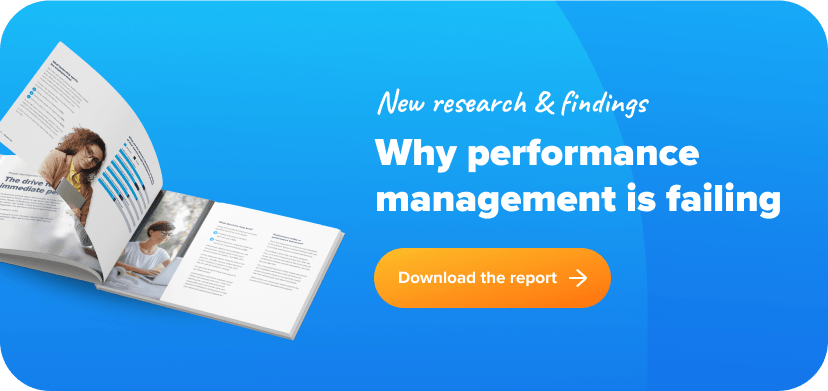The lifeblood of your company is employee performance, but it’s not always so easy to overcome the day-to-day turbulence and keep teams on track with consistent motivation, engagement, and output. If you want to drive consistent productivity (after all, who doesn’t?), the first thing you need to understand is how to measure and improve employee performance across your organization.
To start out, we’ve outlined some of the KPIs (key performance indicators) that you can track to measure employee performance. Of course, the conversation doesn’t stop there. With your KPIs in mind, it’s essential that these measures become the drivers of your performance appraisal and performance management routines, to ensure employees and managers are connected over team goals and objectives. But first, let’s start with the data.
Soft KPI examples for employee performance:
Soft KPIs for employee performance, such as attitude and following company values, can be evaluated through qualitative assessments, like peer feedback and supervisor observations, to gauge alignment with the organisation’s culture and mission. Efficiency, quality of work, and innovative thinking & problem-solving, on the other hand, can be measured by tracking improvements in processes, project outcomes, and the successful implementation of creative solutions.
- Attitude
- Efficiency
- Quality of Work
- Team collaboration
- Innovative thinking & Problem-solving
Hard KPI examples for employee performance:
Hard KPIs for employee performance, such as reaching team targets and tasks completed, provide quantifiable metrics to assess an employee’s contribution to team and project success. Time management in meeting deadlines and achieving personal goal-oriented performance evaluation.
- Reaching team targets
- Tasks completed
- Time management (meeting deadlines)
- Personal goals and objectives

How to increase the performance of your employees:
Your organization might have more, or different, employee performance areas, but the strategy for measuring and improving on them remain the same:
- Identify the area where you want the employee’s performance to increase.
- Have the managers ask the employee how they can support them in increasing performance in that area.
- Set down a goal and follow up at an agreed upon date.
- Optional: Cut down your time-costs and increase your employee engagement by incorporating a performance management tool.
People are different – Knowing how is half the battle
Keep in mind that not everyone learns the same way. In the same way, one person might be motivated by talking about their role and require a one-to-one conversation to make them understand that they are capable of making a difference, and that their performance and quality of work is essential to the company.
Learn how to set great performance appraisal goals for your teams.
Doing this can quickly become expensive in man-hours and the coordination 100s of people. Luckily, we live in a digital age where everyone uses their mobiles constantly, so using a tool with a 1 to 1 coaching session becomes a huge cost-saver and doesn’t sacrifice the personal touch.
Other people might be motivated by having rating scales and seeing how their numbers compare to the rest of the team; are they bringing in more clients, answering more calls, providing better customer service, and so on.
Enabling teams like that to see and compare on a leaderboard will motivate them towards reaching higher targets. (Combining them with conversations as needed will increase the overall efficiency of the employee’s performance plan)
Key takeaways to improve employee producivity:
- Reward employees who exceed standards, even if they do it consistently. Make it cool to be above standard, instead of being forgotten.
- Follow up and monitor the KPI’s regularly.
- Try and understand how to help under performers become better instead. They might be amazing if they get the right help.
- Make sure both the manager, the company and the employee interprets the goals the same.
Enabling & empowering to increase employee performance
If you truly want to measure and increase employee performance, you should consider the link between providing learning material and applying it in practice.
Helping your employees better follow company values can be achieved by having them read the staff book and take a test. However, if you combine it with the fact that they get to have a conversation with their manager and feel like they are important in the company, they are much more likely to become part of the culture rather than acting in a way because they feel that they have to.
Use a performance management system to deliver training, gain insights into how people interact with the material you provide, and create performance plans based on the insights. Want to learn more? Start with eloomi today.






